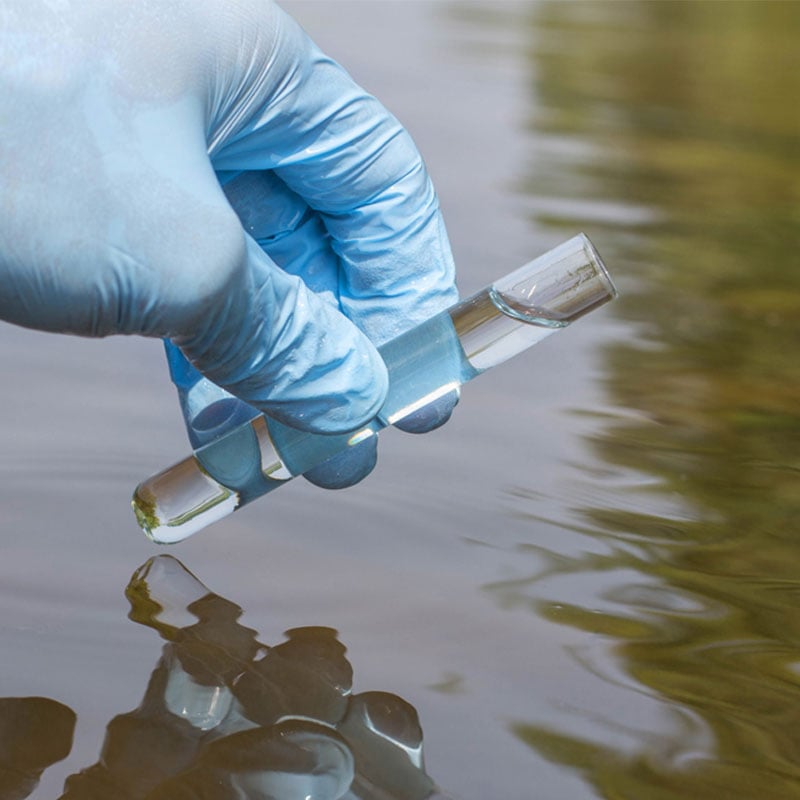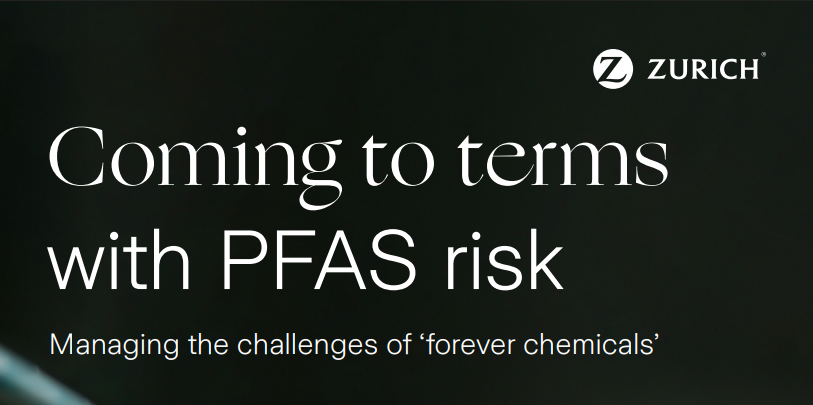
PFAS
Per- and polyfluorinated alkyl substances
"Forever chemicals"
PFAS
Dubbed “forever chemicals,” per- and polyfluorinated alkyl substances (PFAS) are emerging as a potential and significant environmental risk around the world. As government regulations begin to address the potential health hazards presented by this group of chemicals, which are found in hundreds of everyday products, it’s vital for businesses to understand what PFAS are and how to respond to the challenge.


Coming to terms with PFAS risk
FAQ
The PACT Act is a law that expands U.S. Department of Veterans Affairs (VA) healthcare and benefits for veterans exposed to burn pits, Agent Orange and other toxic substances. Access the VA’s website here:
https://www.va.gov/resources/the-pact-act-and-your-va-benefits/
In some cases, manufacturers are starting to add PFAS chemicals to their Safety Data Sheets, but this is changing slowly. Some manufacturers may claim a chemical as proprietary and refuse to identify it directly. At times, the PFAS concentration in a product is miniscule, so the manufacturer may omit the data.
Now is the time to review the company’s Hazardous Materials program and request updated SDS from suppliers. As part of that process, send a registered letter asking whether the products contain any PFAS-related substances consistent with the Organisation for Economic Co-operation and Development (OECD) definition: “PFASs consist of a fully (per) or partly (poly) fluorinated carbon chain connected to different functional groups.”
When the data is received, compare the chemical’s Chemical Abstract System (CAS) number with the EPA’s CompTox dashboard:
The fire protection industry and governments worldwide are seeking alternatives to AFFF. Some new products are entering the market, but a couple of factors limit their wholesale adoption. First, cost: the new products have different characteristics than the AFFF they are replacing, so the cost to replace current fire protection systems could be significant. Second, performance: suitable replacements may not provide the same level of extinguishment, work in all situations, or be safer than the original chemicals.
Companies are advised to monitor National Fire Protection Association (NFPA) standards and follow their advice closely. Where possible, the National Institute for Occupational Safety and Health (NIOSH) hierarchy of controls should be considered. NIOSH defines five rungs of the hierarchy of controls: elimination, substitution, engineering, administrative and personal protective equipment.
On February 13, 2023, the EPA announced a $2 billion in grant funding from the Bipartisan Infrastructure Law for participating states and territories to address emerging contaminants in drinking water, such as PFAS. More information about that funding can be found on the EPA website for the Emerging Contaminants in Small or Disadvantaged Communities Grant Program:
https://www.epa.gov/dwcapacity/emerging-contaminants-ec-small-or-disadvantaged-communities-grant-sdc
To our knowledge, no funds have been set aside from federal or state programs to help companies with PFAS assessments. Companies and individuals may want to reach out to local, state and federal representatives to ascertain whether such funding can be secured.
Ultimately, the courts will determine whether liability may exist for municipalities or local governments. The rules are a little different in each state. That said, however, water and airport authorities in various states have been targeted with lawsuits. The water authorities are seeing suits based on their alleged inability to supply water in compliance with state drinking water standards and for selling allegedly PFAS-contaminated biosolids as fertilizer. Likewise, operators of airports are being named in litigation due to the use of PFAS-based firefighting foam. The allegations range from diminution of property values to personal injury from either exposure to or ingestion of PFAS-contaminated water.
Review Safety Data Sheets (SDS) for each chemical used by looking for the Chemical Abstract System (CAS) number for each component. Compare the CAS number with the EPA’s CompTox dashboard:
https://comptox.epa.gov/dashboard/
The UV coatings on some sunglasses can contain PFAS. However, the frames of the glasses may be a greater source of exposure due to the habit some individuals have of placing ear-pieces in their mouth. Some states require manufacturers to label their products that contain PFAS, but many do not.
For any product, contact the customer service telephone line or online portal for the manufacturer to inquire about PFAS content, coatings or linings.
A good path to finding answers is working with architects, engineers, designers and building owners to understand where building materials contain PFAS, and then partnering with the stakeholders to find alternatives. The Green Science Policy Institute provides a partial list of building materials where PFAS are persistent and pervasive:
https://greensciencepolicy.org/our-work/building-materials/pfas-in-building-materials/
Recycling and waste systems face this emerging issue going forward. As PFAS-contaminated items enter the waste stream, companies must deal with potentially contaminated products — especially in plastics waste. To our knowledge, no answers currently exist for dealing with the potential for PFAS contamination of recyclable products.
Clothing that may contain PFAS usually has the characteristics associated with being heat-, oil-, water-, stain-, UV- and wrinkle-resistant. Textile and chemical companies are developing alternatives to PFAS for use with fabrics. In some cases, alternatives are already in use in the marketplace. The manufacturer can provide details regarding which clothing items have been treated with PFAS-related chemicals.
The PACT Act is a law that expands U.S. Department of Veterans Affairs (VA) healthcare and benefits for veterans exposed to burn pits, Agent Orange and other toxic substances. Access the VA’s website here:
https://www.va.gov/resources/the-pact-act-and-your-va-benefits/
©December 2023 Zurich American Insurance Company Ltd
The information in this publication was compiled from sources believed to be reliable for informational purposes only. All sample policies and procedures herein should serve as a guideline, which you can use to create your own policies and procedures. We trust that you will customize these samples to reflect your own operations and believe that these samples may serve as a helpful platform for this endeavor. Any and all information contained herein is not intended to constitute advice (particularly not legal advice). Accordingly, persons requiring advice should consult independent advisors when developing programs and policies. We do not guarantee the accuracy of this information or any results and further assume no liability in connection with this publication and sample policies and procedures, including any information, methods or safety suggestions contained herein. We undertake no obligation to publicly update or revise any of this information, whether to reflect new information, future developments, events or circumstances or otherwise. Moreover, Zurich reminds you that this cannot be assumed to contain every acceptable safety and compliance procedure or that additional procedures might not be appropriate under the circumstances. The subject matter of this publication is not tied to any specific insurance product nor will adopting these policies and procedures ensure coverage under any insurance policy. Insurance coverages underwritten by individual member companies of Zurich in North America, including Zurich American Insurance Company. Certain coverages not available in all states. Some coverages may be written on a non-admitted basis through licensed surplus lines brokers. Risk engineering services are provided by The Zurich Services Corporation.
